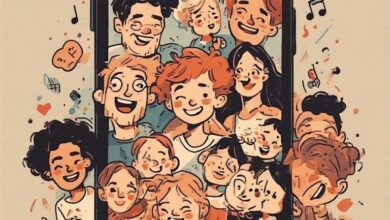Is the Tooth Fairy Real? Discover the Truth Behind This Magical Story

Is the tooth fairy real? That’s a question kids love to ask and parents try to answer with a smile. Many of us grew up placing our tiny teeth under the pillow, waking up to find a coin or surprise in its place. It felt like magic! But where did this story begin? And why do so many children all over the world believe in this tiny tooth-collecting fairy? In this blog, we’ll explore the story of the tooth fairy, what it means to believe in something magical, and how different families enjoy this fun tradition.
Is the tooth fairy real? Maybe not in the way cartoons show, with sparkly wings and tiny shoes. But that doesn’t mean the tooth fairy isn’t special. This sweet tradition brings joy, comfort, and fun during a time when kids might feel scared about losing a tooth. It also helps build happy memories and teaches little lessons about growing up. Parents and caregivers often join in to make the moment extra magical, leaving small gifts or tiny notes that make children smile. Even if the fairy isn’t real, the feeling it brings is very real. So, whether it’s a coin, a toy, or just a bedtime story, the tooth fairy continues to fly through the hearts of families everywhere.
What Does “Is the Tooth Fairy Real?” Really Mean for Kids?
When kids ask, “is the tooth fairy real?” they’re often thinking about more than just a magical fairy. They’re wondering if there’s something fun and special waiting for them under the pillow. This question shows their growing minds, full of imagination and curiosity. It’s also a way to talk about growing up, like losing baby teeth and being brave during little changes. For many children, believing in the tooth fairy brings happiness and makes them feel special. It helps them feel less scared about losing a tooth. Even if they learn the truth later, the magic of believing stays with them. Parents can use this moment to bond with their children, make fun memories, and teach gentle lessons. So when kids ask if the tooth fairy is real, it’s not just about wings and wands—it’s about love, joy, and growing up with a smile.
Where Did the Tooth Fairy Come From? A Simple History for Children
The idea of the tooth fairy didn’t start with sparkly wings and pillows. Long ago, people had many different ways to take care of baby teeth. In old times, some kids threw teeth on the roof or buried them to keep away bad luck. In Europe, people believed tiny mice or fairies took the teeth and left small gifts. The version we know today grew slowly, especially in the United States. Stories, books, and even movies helped shape the fairy into the magical helper kids know now. Today’s tooth fairy comes at night, takes the tooth, and leaves something fun. Even though the story has changed, it still brings the same feeling—something magical is happening just for you! The history might be long, but it shows how people around the world have always made losing a tooth a little less scary and a lot more fun.
Why Parents Love the Tooth Fairy Tradition Too
Parents enjoy the tooth fairy tradition just as much as kids do! It gives them a chance to add a little magic to bedtime. When their child loses a tooth, parents get to plan a fun surprise, like writing a tiny note or leaving a coin. This makes kids excited and happy, and that makes parents smile too. It’s also a special way for parents to help children feel proud of growing up. Even though parents know the fairy is pretend, the joy and fun it brings are very real. It’s not just about the gift—it’s about making a memory. Many parents remember when they believed in the tooth fairy themselves. Now, they get to pass that joy on to their own children. So, the tooth fairy is not just for kids—it’s for families who want to keep the magic alive together.
How Different Cultures Answer the Question: Is the Tooth Fairy Real?
Not every country has a tooth fairy, but many have special ways to handle lost teeth. In some places like Spain and France, a tiny mouse, not a fairy, takes the tooth and leaves a treat. In other countries, kids throw their teeth on the roof or bury them in the ground. These traditions show that even though people have different beliefs, they all want to make losing a tooth fun. So when someone asks “is the tooth fairy real?” the answer can change depending on where you live. Some kids believe in a fairy, some in a mouse, and others have a whole different story. But one thing is the same—kids everywhere love the idea of getting a little surprise for being brave. These stories help children feel connected to their culture and make growing up a bit more magical and exciting.
What Psychologists Say About Believing in the Tooth Fairy
Experts who study children say that believing in things like the tooth fairy is actually very healthy. It helps kids use their imagination, which is a big part of learning and growing. When children ask “is the tooth fairy real?” it shows they are starting to think more deeply about the world. Psychologists say it’s okay to let kids believe in the fairy because it builds creativity and helps them handle change—like losing a tooth. It also gives families a way to talk about small worries and turn them into happy moments. As kids grow older, they usually figure out the truth on their own, and that’s okay too. It’s part of learning. So even if the tooth fairy isn’t real in a science way, the fun and comfort it brings are very real to a child’s heart and mind.
Is the Tooth Fairy Real in Your Family? Fun Ways to Make It Special
Even if your family knows the tooth fairy isn’t real, you can still make the tradition magical! You can write tiny letters from the fairy, sprinkle a little glitter by the bed, or leave a fun note with a coin or sticker. Some parents even make a tiny fairy door or pillow just for the lost tooth. These sweet ideas help make bedtime exciting and joyful. Every family can have its own tooth fairy style! The question “is the tooth fairy real?” doesn’t need a yes or no answer—it can be a fun way to create memories. What matters most is how your family enjoys the moment. Whether your child fully believes or just likes playing along, making the experience fun and loving is what keeps the magic alive. After all, growing up is full of big changes, and little traditions like this help make it easier.
Conclusion
The tooth fairy may not be real like a person, but the feelings it brings are full of real magic. Kids feel brave and excited, and parents get to be part of a joyful moment. It’s a fun way to smile, even when a little tooth is gone.
So, is the tooth fairy real? Maybe not in the way cartoons show, but the love, laughter, and memories are as real as can be. It’s a small thing that makes growing up feel a little more fun and a lot more magical.
FAQs
Q: Is the tooth fairy real?
A: The tooth fairy is not a real person, but many families like to pretend to make it fun for kids.
Q: What does the tooth fairy do?
A: The tooth fairy takes baby teeth left under the pillow and leaves a gift or money.
Q: When did the tooth fairy story begin?
A: The story started a long time ago from old traditions in Europe and has changed over time.
Q: What can I leave instead of money?
A: You can leave a note, small toy, sticker, or even fairy dust—anything fun and kind!
Q: Is it okay to tell kids the truth about the tooth fairy?
A: Yes, when kids start asking questions, it’s okay to gently explain and still keep the fun going.



